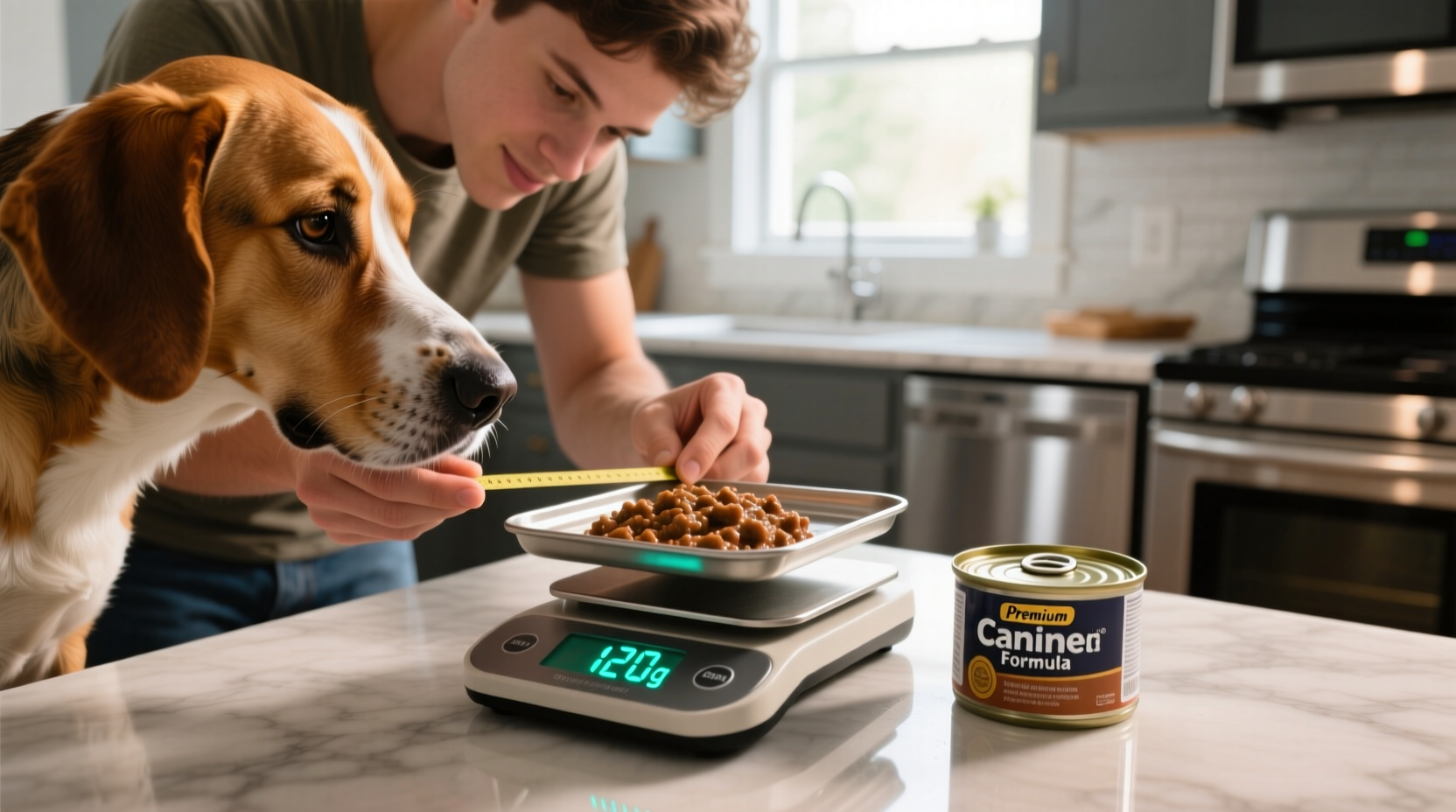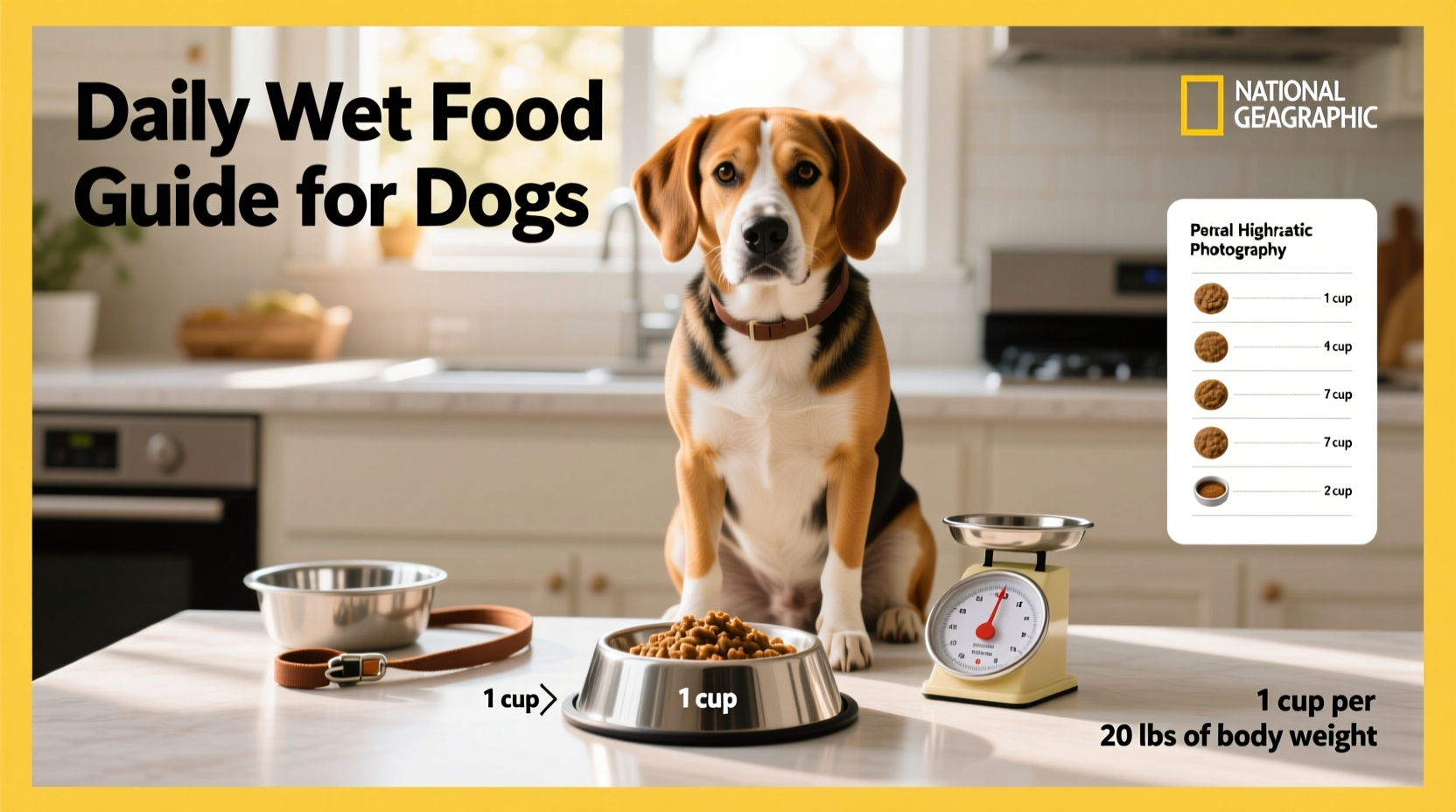Getting your dog's wet food portions right is crucial for their health and longevity. Feed too little, and your pup may miss essential nutrients; feed too much, and you risk obesity-related health problems. This comprehensive guide delivers veterinarian-approved measurements you can trust, helping you provide optimal nutrition for your four-legged family member.
Understanding Your Dog's Unique Nutritional Requirements
While the general guideline of 3-4 ounces per 3-5 pounds of body weight provides a starting point, several factors influence your dog's precise nutritional needs. Unlike dry food measurements, wet food portions require careful consideration of moisture content and caloric density.
The American Veterinary Medical Association emphasizes that individualized feeding plans outperform one-size-fits-all approaches. Your dog's ideal wet food portion depends on:
- Life stage (puppy, adult, senior)
- Metabolic rate (varies by breed)
- Activity level (sedentary vs. working dog)
- Health conditions (thyroid issues, diabetes)
- Spay/neuter status (affects metabolism)
| Dog Weight | Daily Wet Food Amount | Meals Per Day |
|---|---|---|
| 5-10 lbs | 1-1.5 cans (13 oz) | 2-3 |
| 10-20 lbs | 1.5-2.5 cans (13 oz) | 2 |
| 20-40 lbs | 2.5-3.5 cans (13 oz) | 2 |
| 40-60 lbs | 3.5-4.5 cans (13 oz) | 2 |
| 60-80 lbs | 4.5-5.5 cans (13 oz) | 2 |
| 80+ lbs | 5.5-7+ cans (13 oz) | 2 |
Note: These are general estimates based on standard 13-ounce cans. Always check your specific brand's feeding guidelines as caloric density varies between products. The Pet Food Manufacturers' Association confirms that wet food typically contains 60-80% moisture, significantly affecting portion calculations compared to dry kibble.
Life Stage Nutrition Timeline: How Requirements Change
Your dog's nutritional needs evolve dramatically throughout their life. Understanding these changes prevents common feeding mistakes that impact health:
- Puppies (up to 12 months): Need 2-3 times more calories per pound than adults. Feed 3-4 small meals daily using puppy-formulated wet food. The American Kennel Club recommends consulting your vet about proper growth rates to avoid developmental issues.
- Adult dogs (1-7 years): Most stable nutritional period. Maintain consistent portions based on weight and activity level. Monitor body condition score quarterly to adjust portions as needed.
- Senior dogs (7+ years): Metabolism slows by 20-30%. Reduce portions by 10-20% while maintaining nutrient density. Many seniors benefit from specialized senior formulas with joint support ingredients.
Practical Measurement Techniques for Home Feeders
Converting can measurements to practical portions takes some know-how. Most standard wet dog food cans contain 13 ounces, but this doesn't translate directly to familiar measurements:
- One 13-ounce can = approximately 1.6 cups
- Three ounces (common single serving) = about 1/2 cup
- Use a kitchen scale for precision - ounces matter more than volume
When determining how much wet food to feed a dog per meal, divide the daily recommendation into appropriate meals. Most adult dogs do best with two meals 12 hours apart. Puppies under six months often need three to four smaller meals throughout the day.

Avoiding Common Wet Food Feeding Mistakes
Even well-intentioned owners make portion errors that impact their dog's health. These common mistakes undermine proper nutrition:
- Ignoring calorie density differences: Not all wet foods contain the same calories. A 13-ounce can might range from 300-500 calories depending on the brand and formula.
- Free-feeding wet food: Unlike dry kibble, wet food spoils quickly at room temperature. Leaving it out for hours creates bacterial growth risks and makes portion control impossible.
- Mixing wet and dry without adjustment: Adding wet food to dry without reducing the dry portion leads to overfeeding. For every 3 ounces of wet food added, reduce dry food by approximately 1/4 cup.
- Not adjusting for treats: Those training treats add up! They should comprise no more than 10% of daily calories.
Special Considerations for Optimal Feeding
Certain situations require modified feeding approaches. Understanding these context boundaries prevents nutritional errors:
- Weight management: For overweight dogs, reduce portions by 10-15% while maintaining nutrient intake. The Association for Pet Obesity Prevention reports that 56% of dogs are overweight, making portion control critical.
- Medical conditions: Dogs with diabetes, kidney disease, or pancreatitis need veterinarian-prescribed portions. Never adjust food amounts for medical conditions without professional guidance.
- High-performance dogs: Working dogs, hunting breeds, and highly active companions may need 25-50% more food than sedentary dogs of the same weight.
- Transition periods: When switching foods, gradually increase wet food portions over 7-10 days to avoid digestive upset. The FDA recommends this slow transition approach to maintain gut health.
When to Consult Your Veterinarian
While general guidelines provide a starting point, your veterinarian remains the best resource for personalized feeding recommendations. Schedule a nutrition consultation if you notice:
- Ribcage easily visible with minimal fat covering
- Difficulty feeling ribs beneath fat layer
- Consistent begging despite proper portions
- Weight gain or loss exceeding 5% monthly
- Digestive issues after eating
Professional veterinary nutritionists can perform body condition scoring and create customized feeding plans that account for your dog's unique physiology and health status.
Frequently Asked Questions
How do I calculate wet food portions for my puppy?
Puppies need significantly more food per pound than adult dogs. Most puppy wet foods recommend feeding 3-4 times the adult portion based on expected adult weight. Divide this amount into 3-4 meals daily until six months, then transition to twice-daily feeding.
Can I feed my dog only wet food?
Yes, complete and balanced wet foods provide all necessary nutrients. However, consider dental health implications as wet food doesn't provide the same tartar-reducing benefits as dry kibble. Many owners opt for a combination approach to balance nutritional and dental benefits.
How much wet food should I feed an older dog?
Senior dogs typically need 10-20% fewer calories than adult dogs due to slower metabolism. However, they require higher nutrient density. Look for senior-specific formulas and adjust portions based on regular weight monitoring rather than age alone.
What's the best way to store opened wet dog food?
Refrigerate unused portions in airtight containers for up to 3 days. Discard any food left at room temperature for more than 2 hours. Never feed directly from the can - transfer to a clean bowl to prevent bacterial contamination of remaining food.











 浙公网安备
33010002000092号
浙公网安备
33010002000092号 浙B2-20120091-4
浙B2-20120091-4